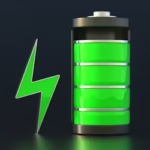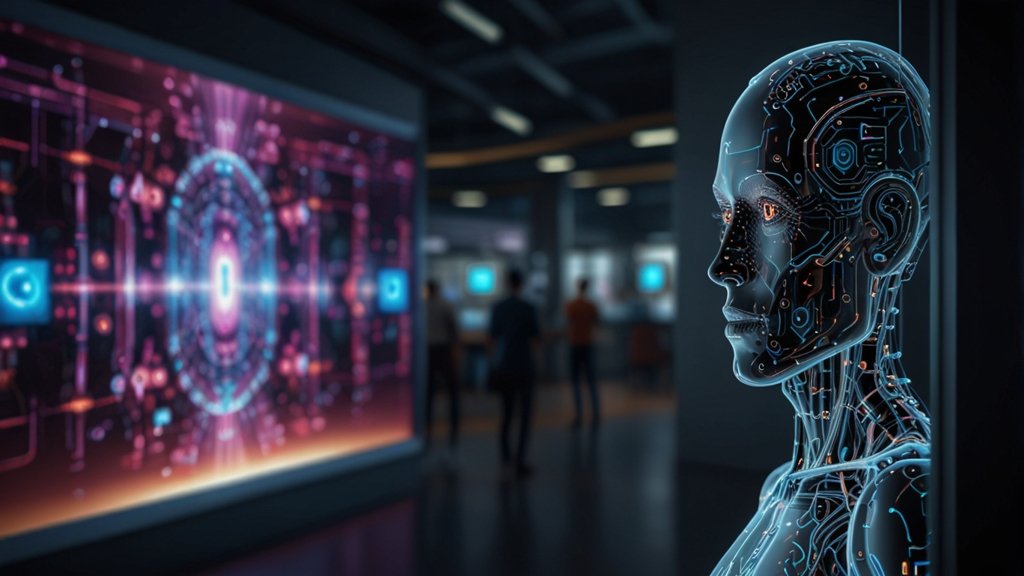The Internet of Things (IoT) is transforming how we live, work, and interact with the world. From smart homes and wearable health bands to industry sensors and connected cars, IoT devices are becoming part of our daily lives.
But expansion leads to one question: how can we ensure that these systems perform well, securely, and with efficiency? That is where AI in software testing comes in. Artificial Intelligence (AI) is assisting test teams in automating, accelerating, and enhancing the quality of IoT applications, hence making the challenging task of testing connected devices easier.
In this blog, we will examine how AI is transforming the test environment for IoT solutions, why, and how developers must implement it to develop IoT applications faster, smarter, and more predictably.
Understanding the Complexity of IoT Applications
First, let’s see why testing IoT apps is so tough:
- Diverse Devices: IoT features multiple devices with varied hardware and software, complicating the testing process.
- Multiple Communication Protocols: Devices communicate over Wi-Fi, Bluetooth, ZigBee, cellular, etc., adding compatibility challenges.
- Large Volume of Data: IoT application use cases generate an enormous amount of data that needs real-time processing and analysis.
- Security Risks: More devices mean more ways for hackers to get in, so checking for safety is a must.
- Quick Responses: Many IoT apps need to act fast, like heart monitors or self-driving cars detecting obstacles.
Conventional testing techniques just aren’t able to cope with these requirements. Manual testing is too slow, and conventional automation is unable to cope with the variability and real-time nature of IoT systems. This is why AI-based testing is gaining popularity.
What Is AI in IoT Testing?
When it comes to IoT, AI-based testing involves the application of Machine Learning (ML) algorithms, Natural Language Processing (NLP), computer vision, and predictive analytics to streamline, enhance, and automate the testing process.
AI-powered tools learn from data, spot patterns, adjust to changes, and even predict future issues, unlike fixed scripts. This adaptability suits the unpredictable, ever-changing world of IoT.
Example: An AI system can spot irregularities in a smart home network, offer ideas to improve device connectivity, or predict when a sensor might stop working.
Benefits of AI for Testing IoT Applications
Let’s explore the main advantages of using AI to test IoT systems.
Quicker Test Automation
Speed stands out as one of AI’s biggest advantages of using AI. AI has the ability to create test cases, run them, analyze results, and even fix errors without human help.
In the world of IoT, where companies need to test devices in various settings and setups, this quickness proves essential. Test runs that once took weeks can now finish within an hour. This lets businesses release updates faster, keep up with rivals, and address what users want.
Example: A smartwatch maker can use AI to test how well their product works with various phone types, operating systems, and network setups.
Better Accuracy and Dependability
Human testers get it wrong when testing with complex systems like IoT. AI doesn’t get tired or lose focus. It can do the same tasks over and over and spot small bugs that people might not see.
What’s more, AI systems can learn from old test results, getting more accurate as time goes on. They can predict potential future bugs by analyzing patterns in past data.
Example: AI can spot a rare loss of connection between a smart thermostat and a home Wi-Fi network that regular testing may miss.
AI-native test management platforms like LambdaTest Test Manager offers comprehensive, cloud-based test management solution designed to help QA teams efficiently plan, organize, and track their software testing processes. It integrates seamlessly with LambdaTest’s cloud testing platform, providing an end-to-end environment for managing test cases, executing tests, and logging defects.
Smart Test Case Creation
Writing test cases for IoT applications manually is a challenging task. It’s tough to think of all possible situations when many devices are interacting with each other in real time.
AI can help by creating smart test cases on its own. It looks at what the application needs to do, how people use it, and system logs to generate tests that cover more real-life situations.
This leads to better testing and lowers the chance of missing key problems.
Example: In a connected car environment, AI can mix thousands of real-life driving scenarios (rain, snow, busy traffic) and evaluate the response of each sensor.
Predictive Maintenance and Monitoring
IoT systems typically contain devices that need to operate continuously, 24/7, with minimal downtime. AI can continuously monitor devices and look for signs of potential failure, alerting the maintenance teams before the failure occurs.
In testing, AI can simulate scenarios that represent long-term usage to evaluate how a device will perform over time. This type of testing empowers developers to design applications with reduced failure rates.
Example: A factory uses smart devices, and AI can look for slight changes in vibration patterns and predict the failure of a sensor, avoiding significant downtime to repair it.
Enhanced Security Testing
Security is a huge issue for IoT implementations. With so many connected devices, there are multiple points of possible vulnerability.
AI can support security testing in the following ways:
- AI can detect odd behavior patterns that might indicate some sort of security compromise taking place.
- AI can simulate various types of cyberattacks to test device resilience.
- AI can continuously monitor traffic going to and from connected devices, looking for threats.
AI allows organizations to identify exploitable vulnerabilities before hackers can, protecting organizations and their user base.
Example: AI may detect vulnerabilities to a specific type of hacking method from a smart door lock’s firmware and recommend updates to mitigate the vulnerability.
Effective Management of Big Data
IoT devices produce massive data every second, and manually reviewing that data to analyze it is impossible.
AI can easily sift through and process huge amounts of data, pinpoint trends in the data, and use its insights to enhance testing strategies. AI is also efficient at prioritizing tests based on real use of data, so they spend time testing the most meaningful features.
Example: In a well-designed smart city with numerous traffic sensors, AI can analyze the information to optimize traffic light schedules and thus decrease traffic jams.
Improved User Experience Testing
User experience (UX) is an important consideration for many IoT devices. They should be easy to use, reliable and responsive as well.
Artificial intelligence can simulate mass user interaction, experiment with many different user paths, and identify possible usability issues in advance. Artificial intelligence can also leverage computer vision in an effort to properly render interfaces on different media.
Example: Artificial Intelligence can assess whether the smart home app shows the status for all connected devices accurately, regardless of the phone screen size.
Dynamic and Adaptive Testing
Internet of Things (IoT) applications are dynamic as devices come online and offline, environments change, and new devices are introduced. Traditional testing methods find it difficult to keep up with these quick changes.
However, as the applications evolve, AI-powered testing can change test situations in real time.
Example: If a new smart sensor is added to a home security system, Test AI automation can automatically update its tests to test the new device addition.
Cost Reduction
Because of the complexity of IoT systems and the number of devices within a given system, testing an IoT system manually or through traditional means can be incredibly expensive.
AI-powered automated and effective testing lowers the need for manual testing, speeds up time to market, and lowers the possibility of costly post-release flaws.
.
Example: A company with IoT products that uses AI-based test automation systems would be able to save 50% in testing costs, which can be used as innovation funds instead.
Practical Uses of AI in IoT Testing
To make this idea even more tangible, below are some real-world examples:
- Healthcare: AI tests remote patient monitoring systems for accuracy and reliability, ensuring important health information is delivered timely.
- Automotive: AI tests the communication of vehicle sensors with central control units, validating the proper operation of safety features, including automatic braking.
- Smart Homes: AI tests the relationships between smart lights, security cameras, and thermostats with voice assistants so everything works together.
- Agriculture: AI tests and monitors connected irrigation systems to ensure crops are getting water at the right time and in the right quantity.
Issues and Considerations
There are many positive aspects of AI technology, but it is also worth being aware of some issues:
- Initial Setup: AI models require you to have a good quality data input and an initial investment.
- Ongoing Learning: AI systems require a continual system of updating and retraining AI as IoT applications change.
- Bias: If an AI model is based on a biased data set, it could miss something severe.
- Human Oversight: AI cannot replace human expertise, but it can complement it.
If teams understand these challenges and plan accordingly, then they will be able to effectively benefit from AI testing.
The Future of AI and IoT Testing
AI and IoT testing will continue to advance in the future. It is reasonable to expect:
- Self-healing systems: IoT systems will have the ability to detect faults and repair an issue by themselves.
- More Personalised testing: Artificial Intelligence that adapts testing based on the behavior of individual users.
- Increased Ethical Considerations: Ensuring AI testing solutions are fair, transparent, and unbiased.
- Collaborative relationships between AI and humans: Teams working in conjunction with smart AI tools to produce even better results.
As AI models become smarter and IoT systems become more complex, their partnership will define the future of innovation.
Conclusion
The Internet of Things offers us a new world of convenience, efficiency, and opportunity; however, with that opportunity comes the responsibility to provide safe, secure, and reliable applications. The previous methods of testing IoT applications simply do not allow for proper testing in those areas.
This is where AI comes in—faster testing, precision, better coverage, predictive maintenance, better security, and less cost. By using AI in software testing, teams are able to use the full potential of IoT and provide a quality product to their clients.
Using AI is not a luxury anymore; it is a necessity if you want to keep your software competitive with the fast-moving patterns of the digital world.
No matter if you are working on smart houses, connected vehicles, medicaldevices or robotic applications in factories, incorporating AI-powered tests into your software development process will ensure its current and future operability.
This is just the start of endless opportunities. Are you ready to step into the future of IoT testing?
YOU MAY ALSO LIKE: How AI is Changing the Video and Image Editing World: The New Age of Digital Content Creation











